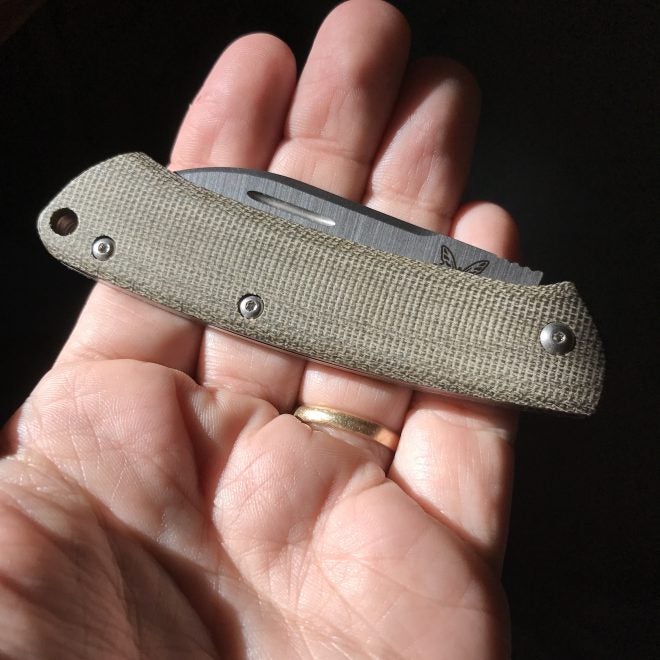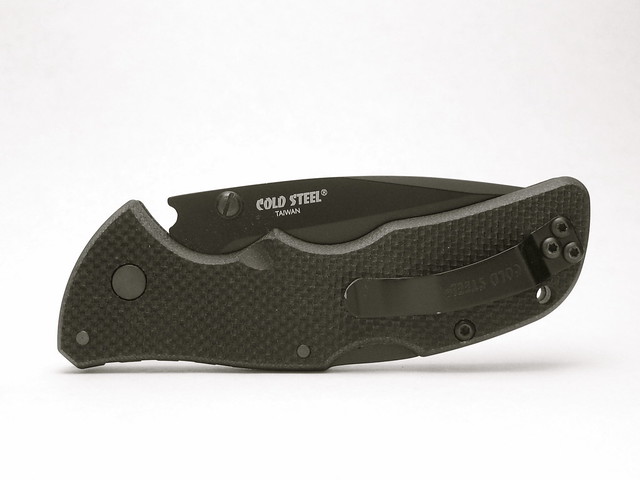Proven Gear v. Old Gear: Thoughts On Three Proven Gear Technologies
Tony Sculimbrene 04.06.18

For research purposes I have decided that I am going to review three “old” classic pieces of gear–the Buck 110, the Mini Mag, and the Leatherman PST. Through years of care, I happen to have very good condition version of all three historically important items. It is hard to imagine folders without the 110, flashlights without the Mini Mag, and there is no multitool market without the PST. At the same time I’m also reviewing the Streamlight Protac 1L-1AA.
While on this nostalgia bender I have noticed something that I missed before. Experience has taught me that there is a difference between proven gear and old gear. It is a very useful distinction, but pinning it down is very difficult.
Proven gear, by definition is heuristic in nature–it has solved a problem. But the definition of “proven” is, interestingly enough, itself a heuristic. I can’t define it so much as I can point to it.
There are two more problems associated with finding proven gear. First, nostalgia is a powerful siren and often what we had a long time ago can seem like it is proven gear, when, in fact, it is just old. And warding off this siren is very, very hard to do. Finally, and most difficult, its only after a lot of experience have I come to see the distinction. This is something I simply couldn’t understand 1,000 knives ago. Now, with some modest amount of experience under my belt, I feel like I can point out proven gear more often than not, though, of course, those with more experience are more accurate than I will be.
Less Is More: The Slipjoint
For a very long time, I simply refused to review these knives, thinking they were like cars without power steering–a half rate design that was the vestige of an bygone era. But the reality is, after spending some quality time with a handful of good slipjoints, I can say without a doubt that the design is proven. It is an excellent illustration of good design in the sense that slipjoints do what they are supposed to do with quite a bit of elegance, but no real wasted elements.
Simply put–slipjoints have proven to me that I don’t need a lock. Furthermore, quite often, the lock is a place for the knife to fail, an entry point for flaws and problems, and a constant source of maintenance. Getting rid of it may mean you have to have a bit of common sense regarding knife use, but more common sense is a good thing.
Compare two knives–the Benchmade Proper, one of my absolute favorite production knives right now; and the Cold Steel Mini Recon. I genuinely like both of these knives. They are both super useful tools. But in many ways, the choice to NOT have a lock was a good one. The Mini Recon runs the Tri-ad lock, a variant on the lock back. It is, in my experience, and by most testing, a very strong lock. But in making the lock, the design necessitated an extra wide gap in the rear tang of the knife.
This, in turn, invited all sorts of materials into the inner workings of the knife. In my case, I actually had the knife fail to lock up because of lint in the tang. With the Proper, there is no lock and so there is no possibility of lock failure–simplicity is always a virtue. That is one key sign that a piece of gear is proven–it is simple. Simple stuff tends to last, tends to work, and tends to be reliable–all elements of proven gear.
Don’t Chase Trends: A Great Flashlight Reflector
Flashlights are always going to be dogged by numbers. Flashlight X outputs 700 lumens and is therefore better than flashlight Y that outputs 600 lumens. But numbers, specifically lumens, only tell you a very small part of the story. In the knife world, most people agree that blade geometry and heat treat are as important as blade steel, but for reasons that escape me, folks evaluating flashlights miss a similar point. To me flashlights are three things–output (measured in lumens), color rendering (measured in CRI), and beam. A light with low lumens count and mediocre color rendering can still be a winner if the beam pattern is solid.
The point was proven (ah ha!) to me by the Streamlight ProTact 1L-1AA. I took it on a pair of winter hikes and during that time my family members got much more powerful lights, some over 1000 lumens, but time and again I was blown away by just how good the Streamlight looked. Part of this is the fact that lumens are perceived by the eye logrhythmically and not linearly. A 300 lumen light is not twice as bright to the eye as a 150 lumen light. But that accounts for only a small percentage of difference. The emitter on the Streamlight is funneled into a beam via an excellent reflector. Time and again, I have seen this. The McGizmo Haiku still is a great light. The HDS Rotary is and always will be useful.
A good reflector makes a good beam and a good beam is vastly more important than some artificially high number. This is another element of good gear–a willingness to avoid chasing trends.
Know Your Role: 1095 Steel
It would be a remiss of me to write a piece about proven gear and not mention 1095. This is one of the oldest and most common steels, but time and again found in a tremendous variety of knives, I have found myself drawn to 1095. It’s to the point where I can’t seem to find a fixed blade design that I don’t like so long as it has 1095. From the ESEE Candiru to the BK-9, I love me some 1095.
But it is not an auto-win. I have had multiple thin folders that I just didn’t care for in 1095. It was chippy (which it always is) and hard to get sharp again. And this leads me to a final element of proven gear: it knows its limitations. No knife can be all things to all people (though the Bark River Bravo 1 LT in 3V is pretty close), but by avoiding crazy claims and disparate uses, proven gear can settle into a groove and always do well. To me, that is exactly what 1095 is for fixed blades–always very good.
Proven gear is some of the best stuff to buy. It tends to be cheaper and more reliable than high end, fidgety stuff, and the list above–the Proper, the Streamlight, and a good 1095 fixed blade would suit a lot of people well and come in, all told, around $150. Not bad.


